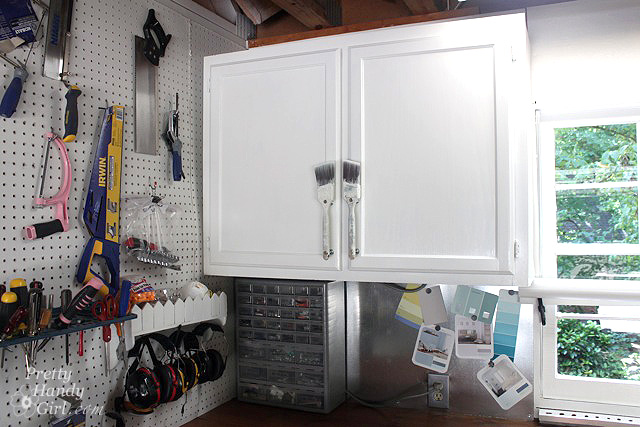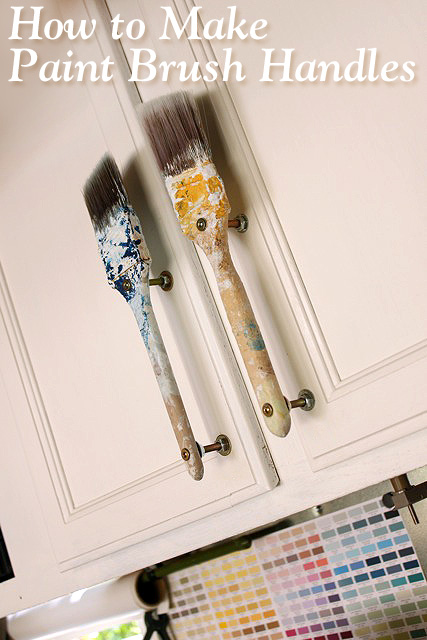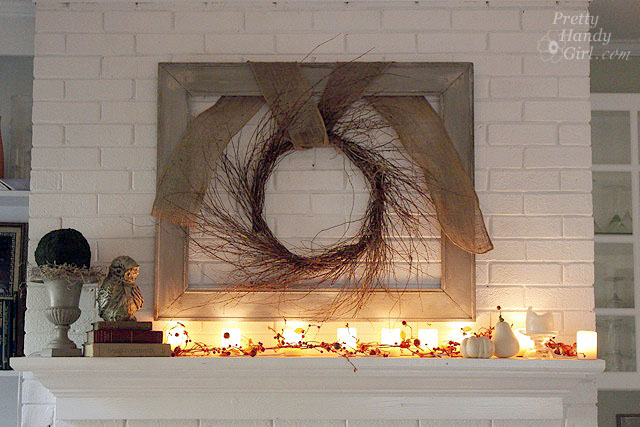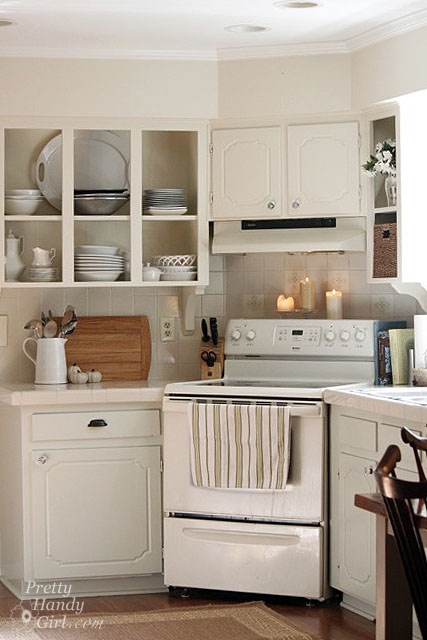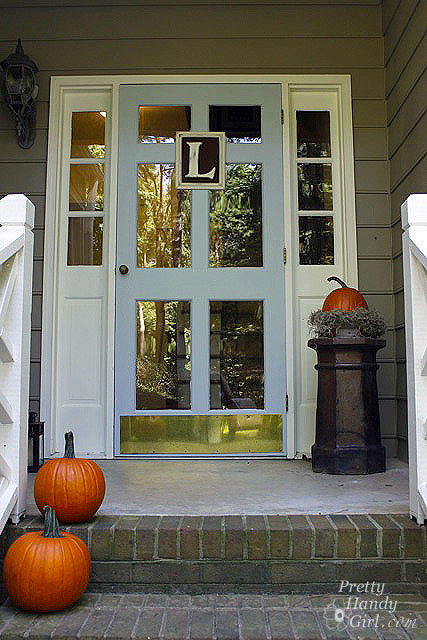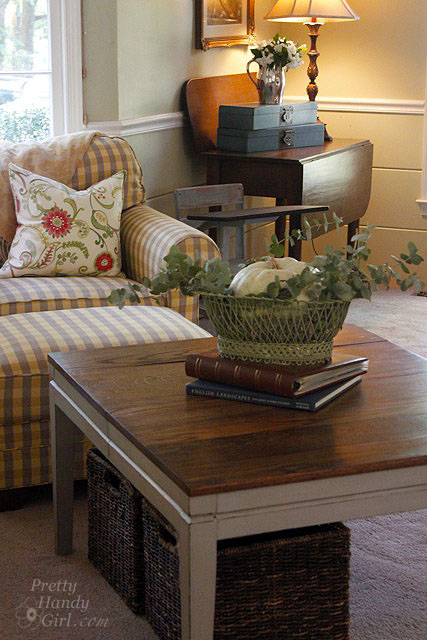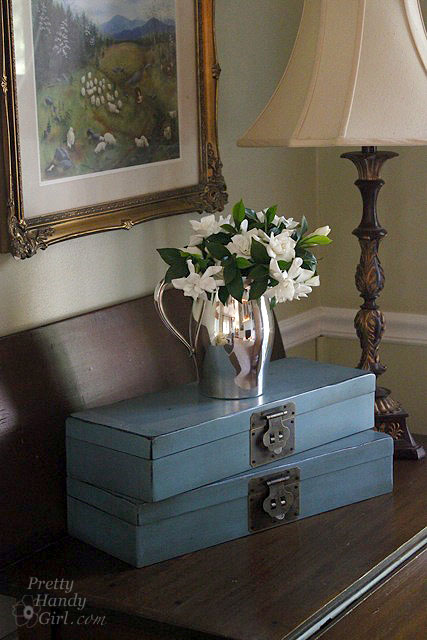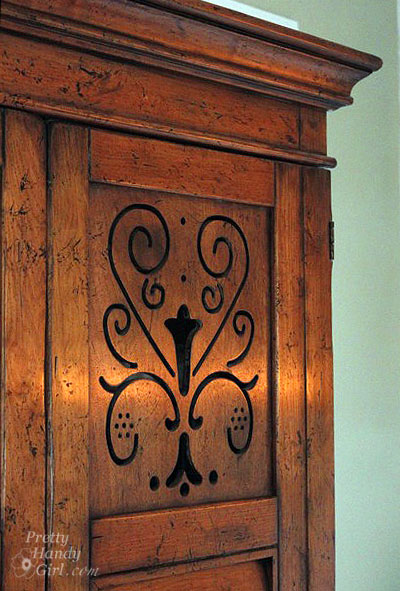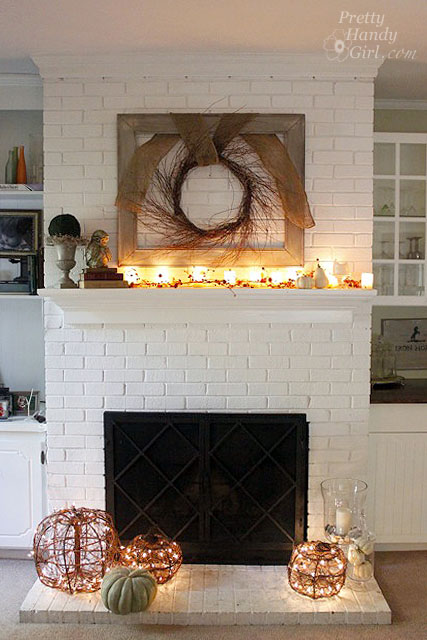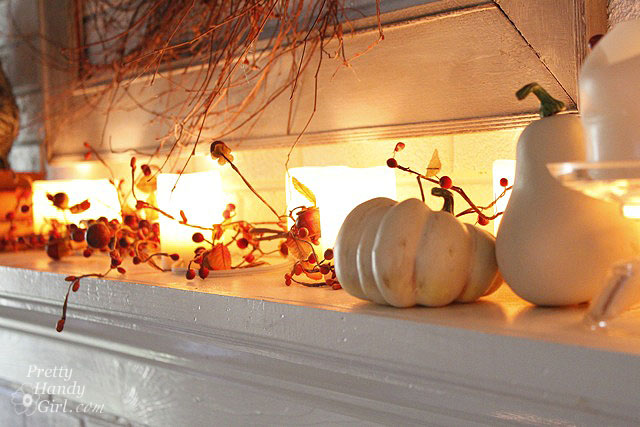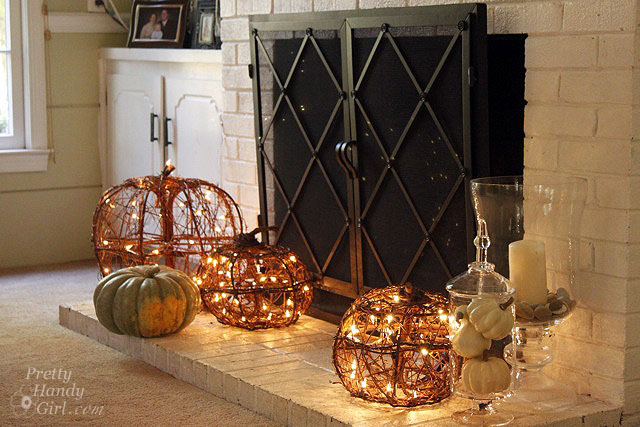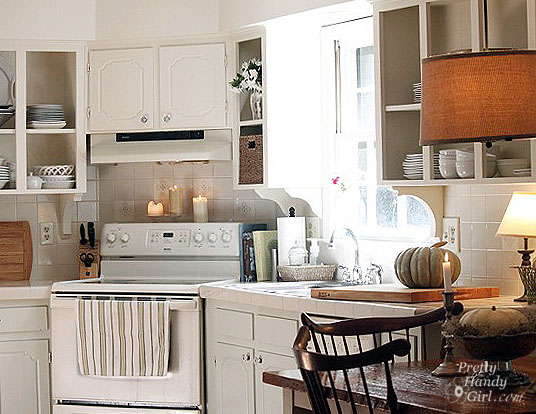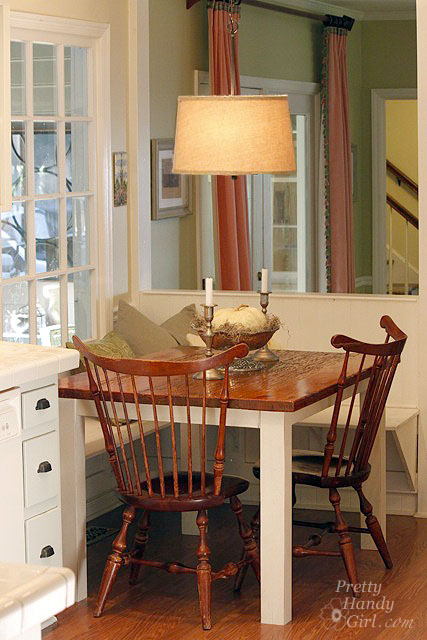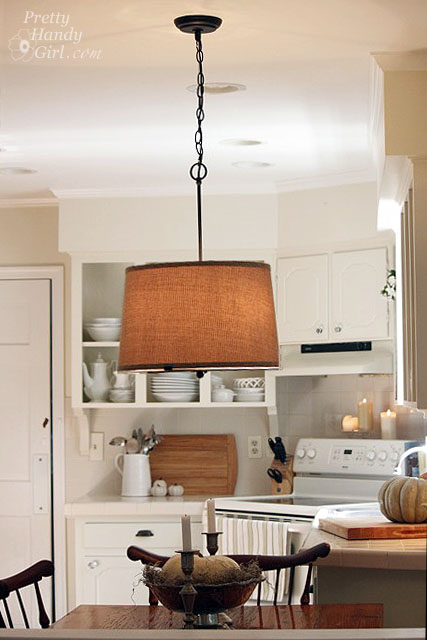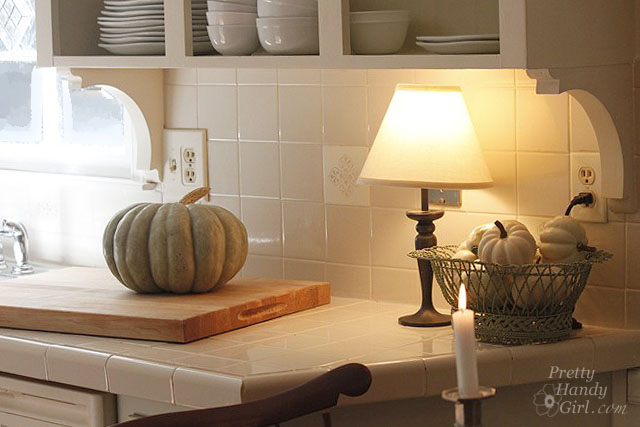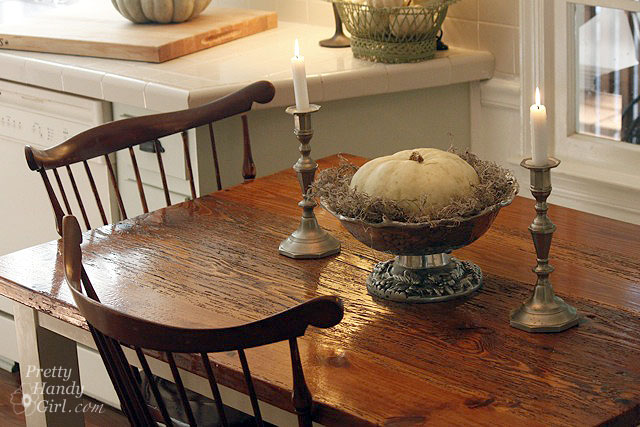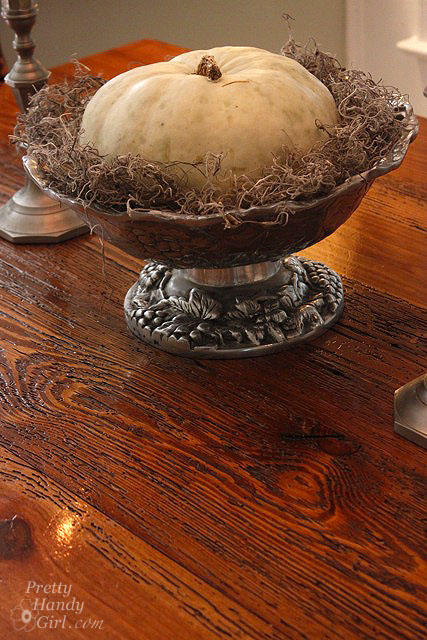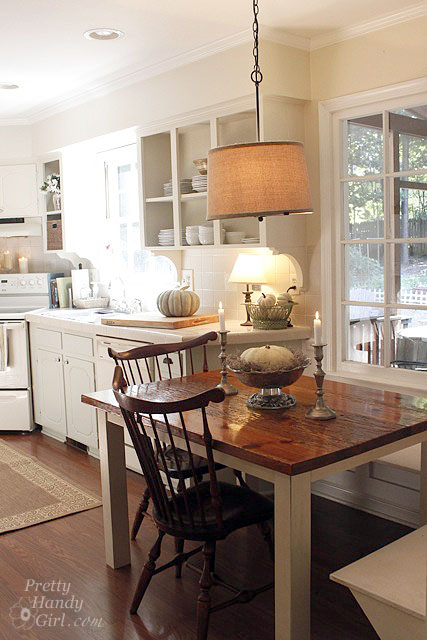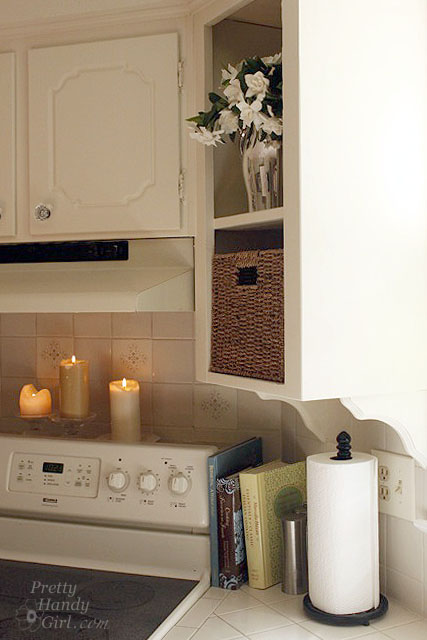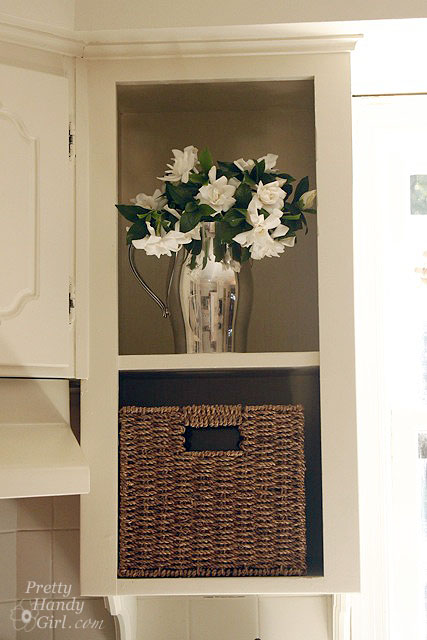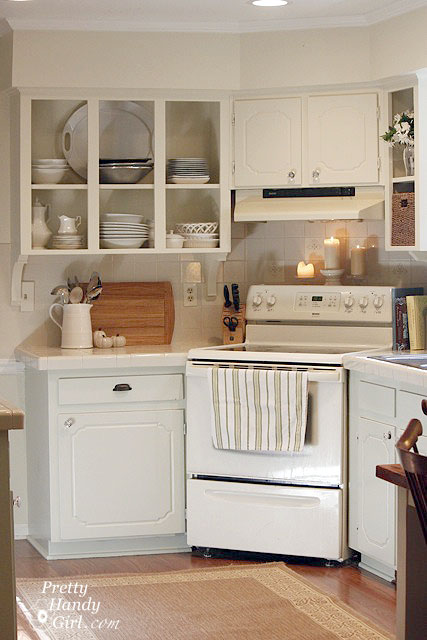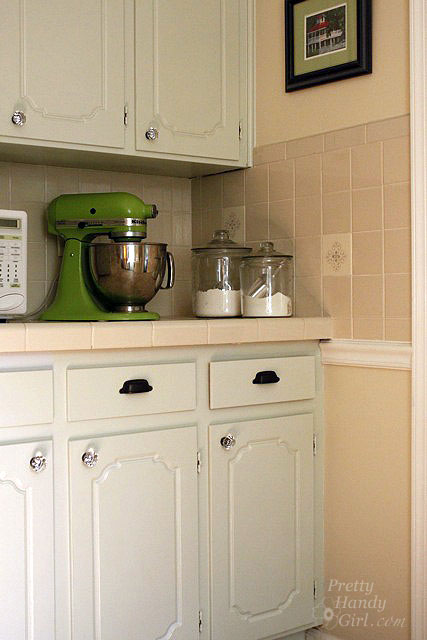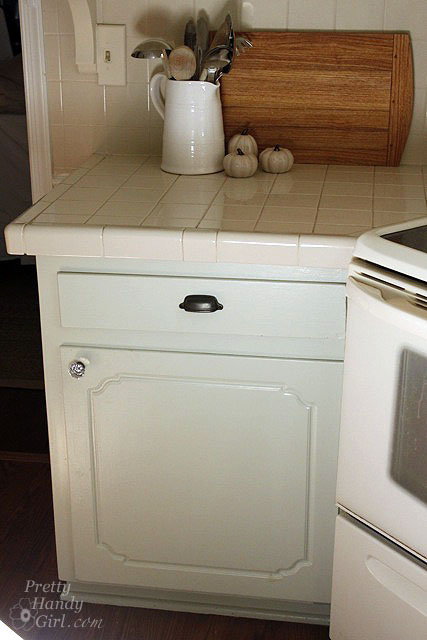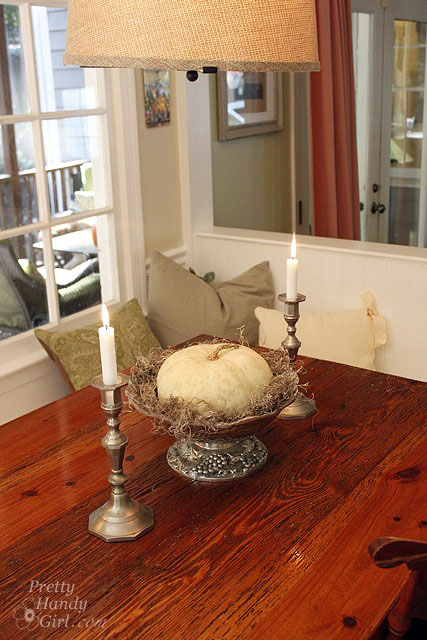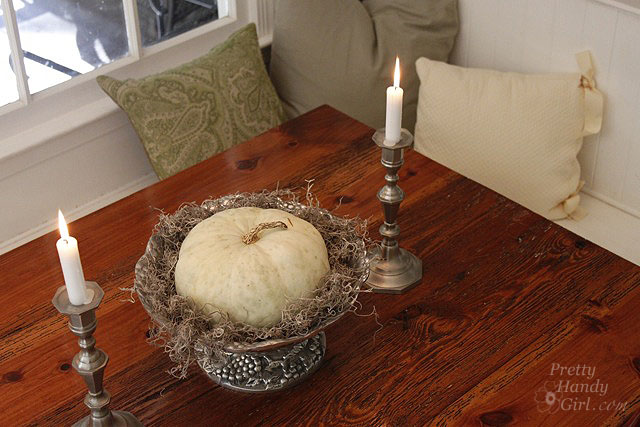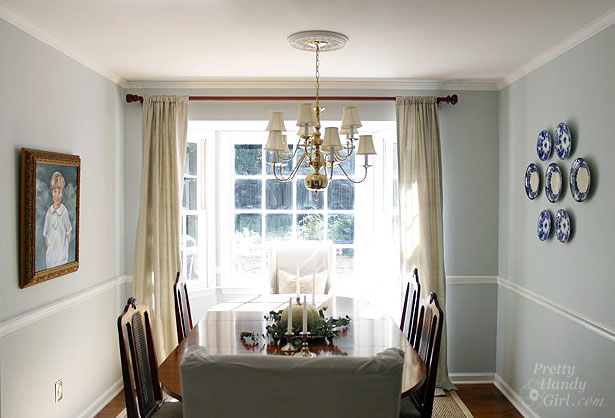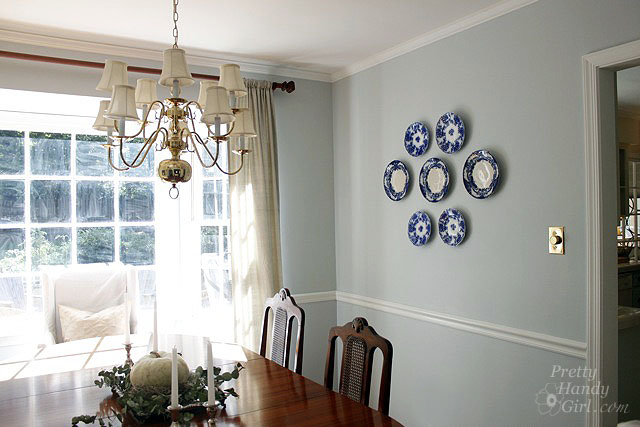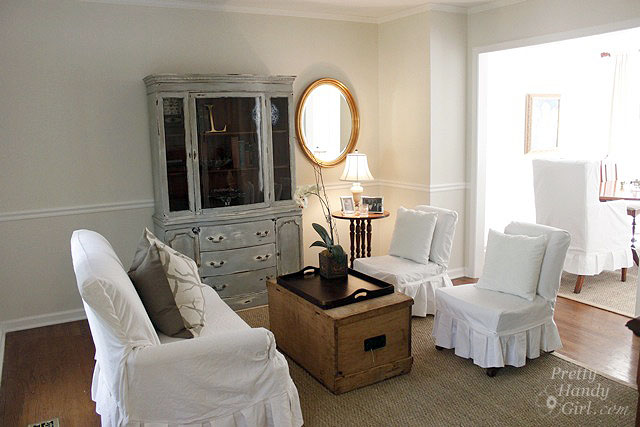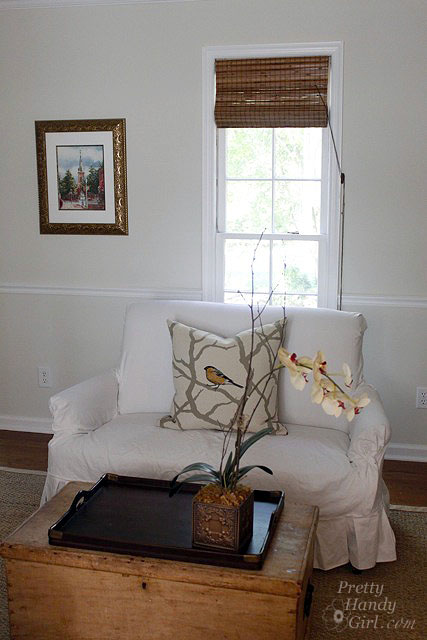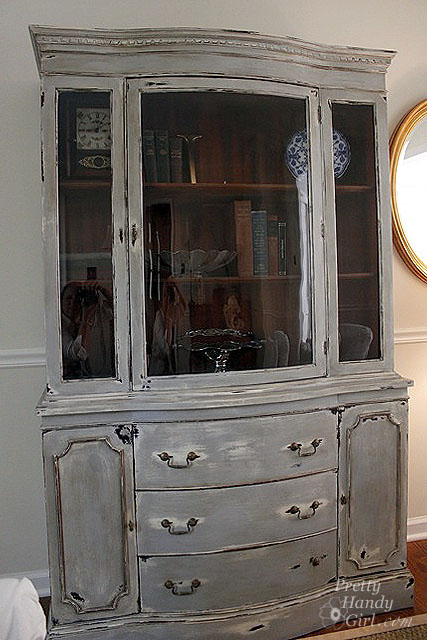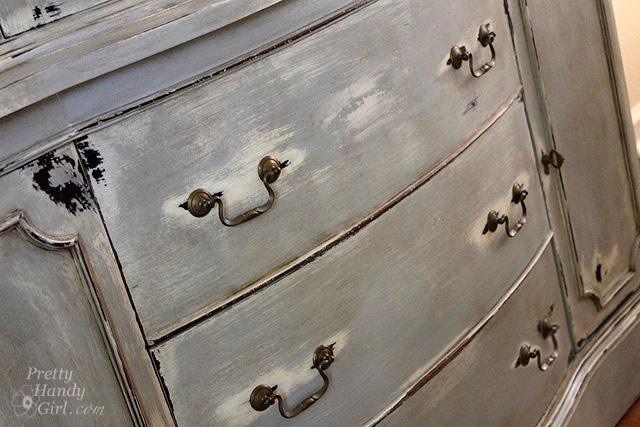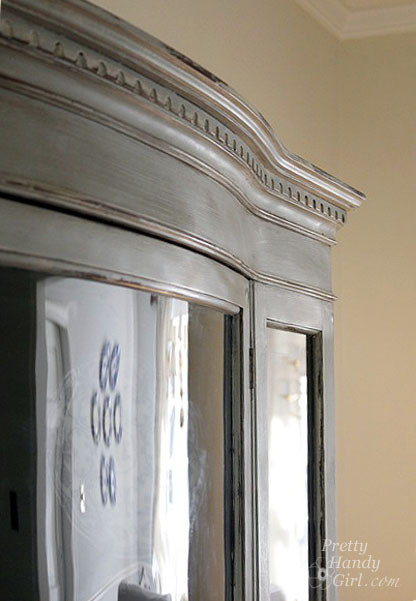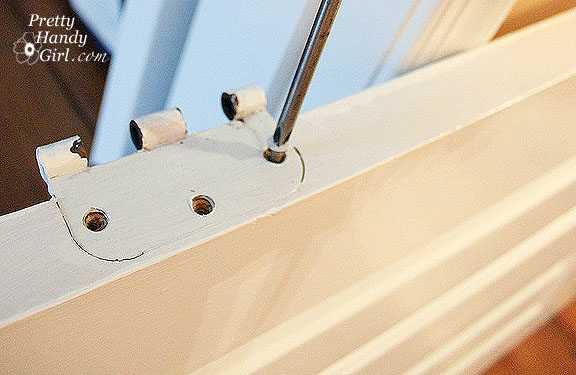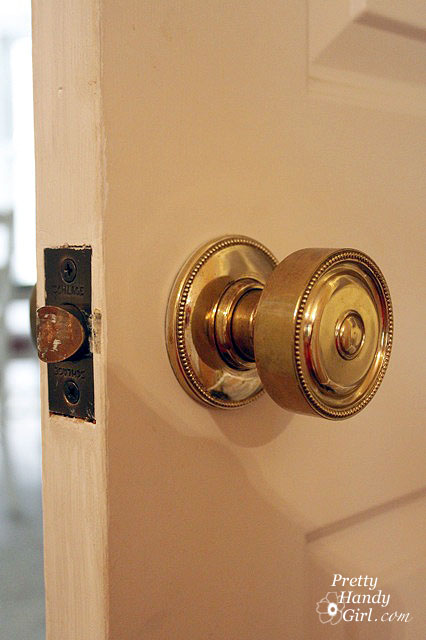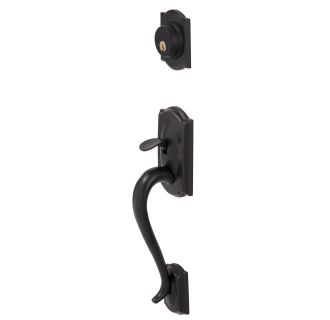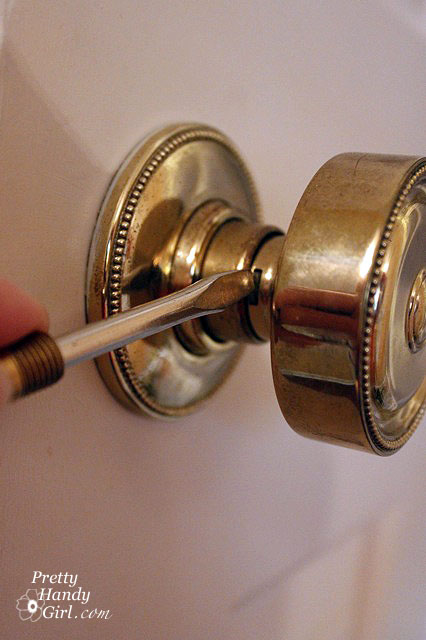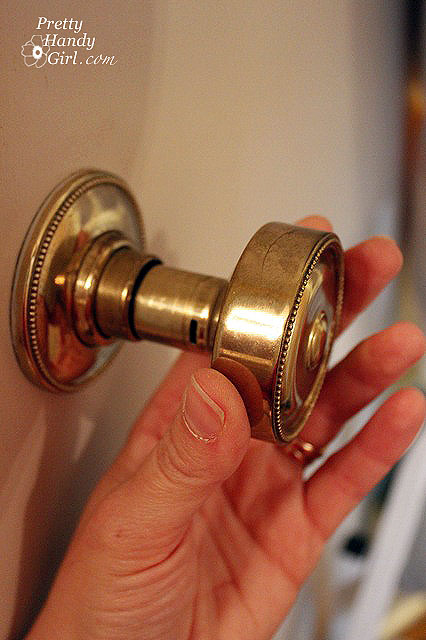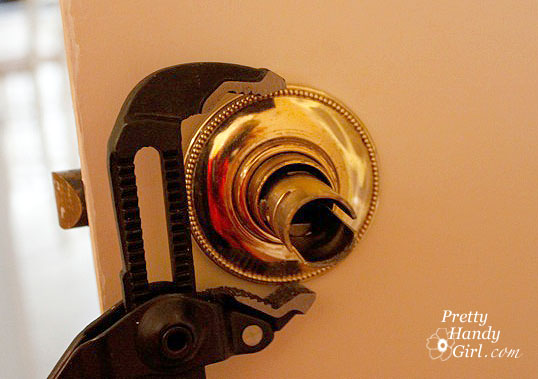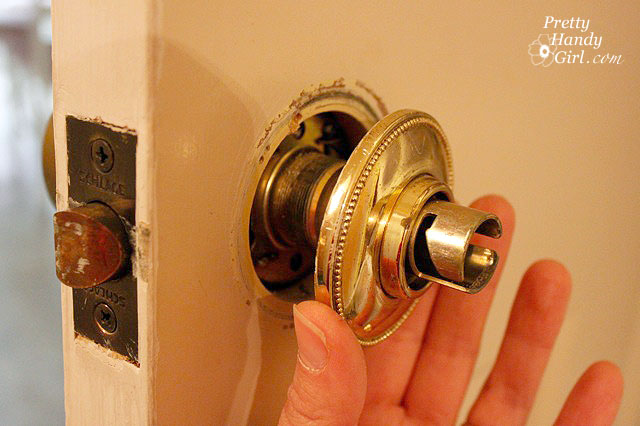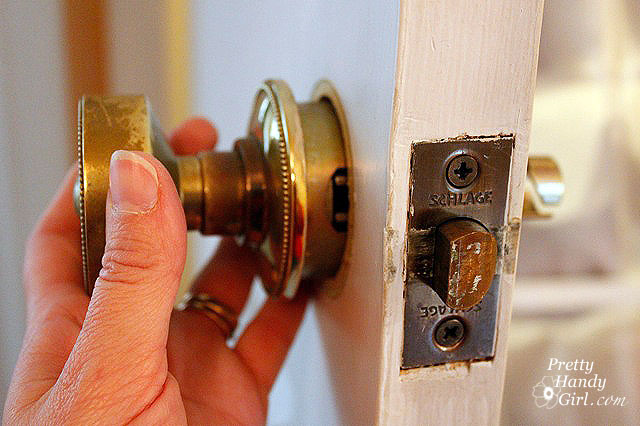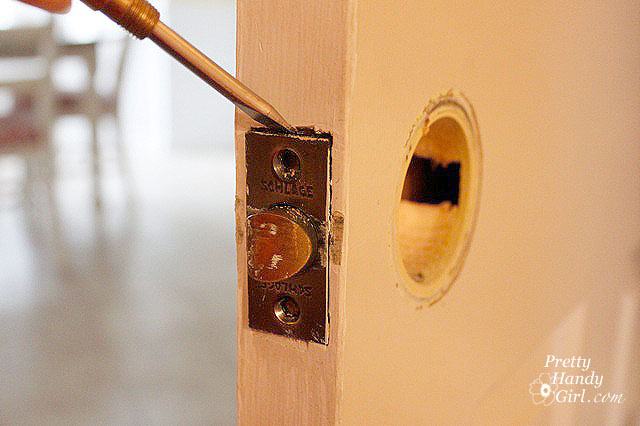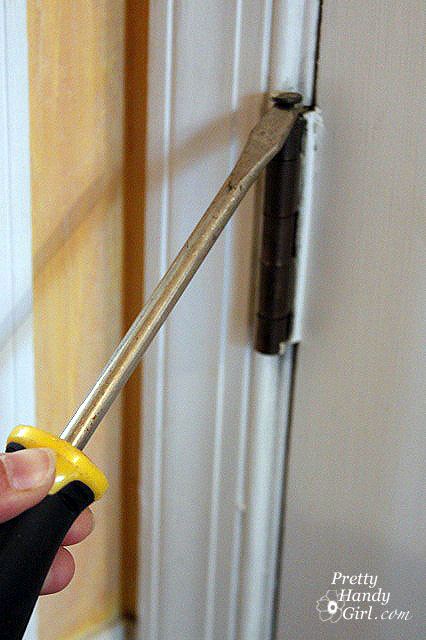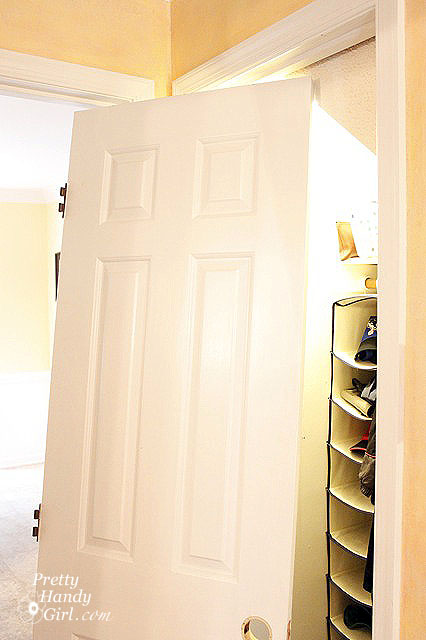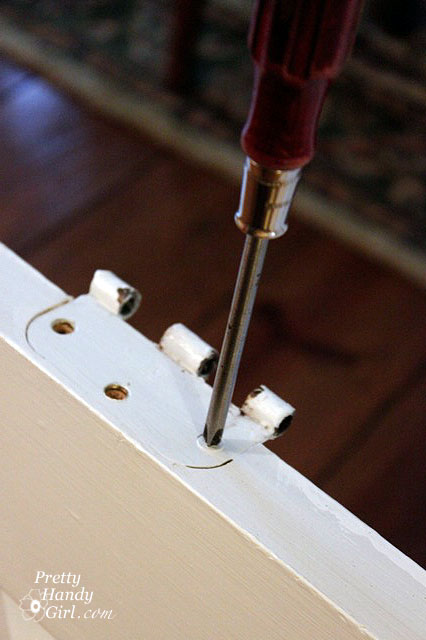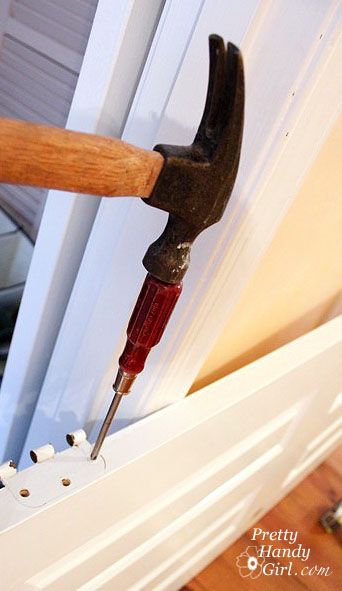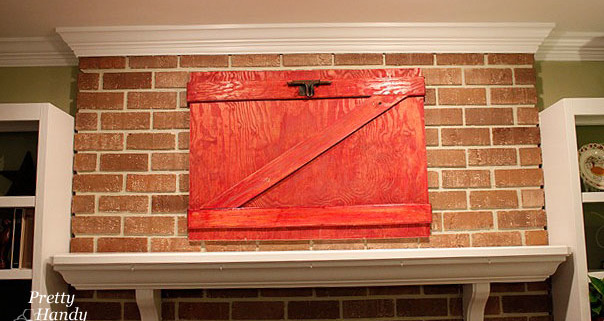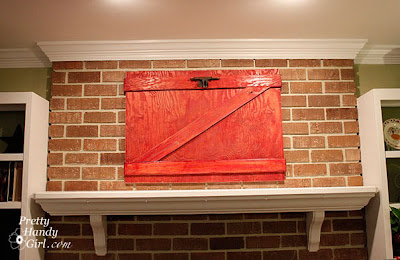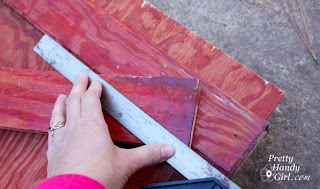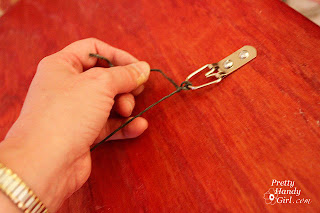Hey guys and gals, I have a special guest for you today! Today I have a real life Handy Man today. That’s right we’re bringing in a little testosterone to mix things up.
This is Jeff aka Pretty Handy Man:

Jeff writes Home Repair Tutor, a blog that shares tips on saving time and money when doing home repairs. He shares his experiences, both good and bad, to help you with what sometimes seems like overwhelming home repair projects. He also likes the Steelers, (I’m supposed to tell you that because guys find that stuff important. So, if you hate the Steelers, boo on you. Can you tell I’m naive on how to talk sports?)
Plus, he always adds a little humor to his videos. (My favorite is garage door testing the unorthodox way. Don’t you just love a man who isn’t afraid to ride a pink bike?)
I’ve been following Home Repair Tutor for a few months now and Jeff’s recent post about garage door maintenance saved me some cash. I had been trying to solve why my garage door was running so rough and had already replaced the rollers. But, Jeff had one tip that I had forgotten to do: Lubricate all the moving parts! Duh, a few squirts of lubricant had the doors rolling smooth again. I hope you’ll check out his blog and follow along. You won’t be disappointed.
So, today I give you handy man and comedian, Jeff from Home Repair Tutor! Woooohoo!
Thanks Brittany for the opportunity to guest post on Pretty Handy Girl. You’ve set the bar high for home remodeling tutorials and I hope to empower your fans with another great DIY project. But first let me briefly introduce myself.
My name is Jeff Patterson and my remodeling blog is Home Repair Tutor. In my spare time I manage and fix my own older rental homes here in the Pittsburgh area. I’ve been doing this for almost a decade and have experienced numerous projects that include kitchen remodels, bathroom installations, hardwood floor restoration, and more. My goal is pass along all the tips and tricks that I’ve learned so others can benefit.
Today’s post deals with a project that anyone can do:
Replacing Garage Door Extension Springs
A squeaky garage door has a penetrating sound that can drive anyone crazy. The average garage door is opened and closed over 600 times every year. This repetitive action is what leads to the creaks you hear on a daily basis.
But regular maintenance can help your garage door run smoothly and safely. Two of the most used items on your garage door are the extension springs that help lift and lower it. Extension springs are found on most traditional roll up garage doors. They’re dangerous if not properly maintained since they hold a tremendous amount of tension.
(Pretty Handy Girl notes: Torsion springs are the other type of garage door springs. They run directly over the garage door opening on a rod. Serious injury can occur if you don’t know what you are doing or have the right tools to replace a torsion spring. In my opinion, these should be left to the pros.)
This tutorial will take the mystery out of how garage door extension springs work and will show you how to safely replace them on your own without spending a ton of money. By the end of this post you’ll confidently be able to perform this home repair project, and tell your neighbors you’re a garage door Jedi :).
Are Your Garage Door Springs Misbehaving?
This tutorial is going to address garage door extension springs that run along the door’s horizontal track. But how do you know if your springs need replaced?
The picture below is a good example of what a spring looks like at the end of its life cycle.
If this spring breaks it will release an extraordinary amount of tension that can be unleashed on a person or item in your garage.
Another sign of worn springs is creakiness or uneven closure of your door. Bad springs can put pressure on the garage door rollers and cause them to screech. If one spring is bad but the other is in good shape the door may close unevenly, too. You’ll notice this if the door is closed and one side is higher than the other.
Extension springs are colored coded. In my case the springs had red paint sprayed just on one end, and this indicated that we had a 150 lb. garage door.
You can go to Home Depot and buy your replacement extension springs based on the color code. The picture below shows the wide range of springs you can buy.
Now that you know how to choose your springs you can get started on your project.
Become a Jedi of Garage Door Springs
But even Yoda would agree that safety comes first.
Completely open your garage door and unplug the power cord to the opener.
Place a C-clamp on each track underneath the the bottom garage door roller. This will prevent the door from rolling down to the ground in the next step. For extra protection you can put a step ladder underneath the center of the door.
Pull down on the garage door’s manual safety release. This allows the garage door to be moved up and down without the help of the opener.
The door weight should now rest on the C-clamps.
This next step is a smart tip that will ensure your extension spring installation was done correctly. Place a piece of blue painter’s tape on the garage door track underneath the pulley that’s attached to the extension spring. Then place a mark on the tape to indicate the center of the pulley’s bolt.
Since the spring has no tension in it you can safely remove the steel safety cable that runs through it. This cable is in place so that if your garage door spring snaps it won’t shoot across the room and hurt someone. The safety cable runs through the spring. It’s tied to the horizontal support bracket closest to the garage door opening on one end and is simply tied to the vertical support bracket on the other end.
Before removing the safety cable from the support brackets you should take pictures of how it was tied together. This will help you when you have to re-tie it after the new extension spring is installed. I also numbered the holes on the vertical support bracket as 1 & 2 to help with this process.
Since the steel safety cable will only need to be removed from the horizontal support bracket I also decided to make a reference mark on it. This mark will allow you to reinstall the safety cable to how it was originally setup.
The next step is to remove the garage door extension spring.
There’s a steel cable connected to the bottom of your garage door. This cable runs over a stationary pulley that’s attached to your garage door track. This steel cable continues until it goes over and around a second pulley that’s attached to your extension spring via a pulley fork. The steel cable then is attached to the horizontal support bracket via an S-hook. This S-Hook is also attached to a three hole adjusting clip.
Mark where the S-hook was positioned on the support bracket then remove it.
Now you need to disassemble the pulley that is connected to the spring. This is simple but again take a picture of your configuration for reference. Remember that the steel cable that runs from the bottom of the garage door goes over the top of the pulley then to the horizontal support bracket. You’ll need two wrenches to undo the nut and bolt that hold the pulley to the pulley fork.
 Remove the pulley and pulley fork from the extension spring. The spring can now be taken off the eye bolt hanger. The eye bolt hanger is attached to the vertical support brackets that come down from the ceiling.
Remove the pulley and pulley fork from the extension spring. The spring can now be taken off the eye bolt hanger. The eye bolt hanger is attached to the vertical support brackets that come down from the ceiling.
The picture below shows the old spring on the left and the new spring on the right. Is there any doubt the extension springs needed replaced? 🙂
A New Era of Garage Door Efficiency Begins
The installation of the new spring, as you can imagine, is opposite that of the removal process. It’s easy but requires attention to detail.
Attach the non-color coded end of the spring to the eye-bolt and run the steel safety cable through it.
Pull the steel safety cable through the vertical support bracket. I labeled the two holes the steel cable will pass through.
Hole 1 has the cable going through it right to left. The cable should then pass through Hole 2 from left to right.
 A loop is created. Thread the cable back through this loop. Notice the black reference mark that was made on the cable. I used pliers to pull the wire tight such that this mark stops short of going through Hole 1.
A loop is created. Thread the cable back through this loop. Notice the black reference mark that was made on the cable. I used pliers to pull the wire tight such that this mark stops short of going through Hole 1.
Pull the steel cable through the hole on the far side of the support bracket.
Weave the cable back and forth in the same manner as it was before being removed.
The other end of the steel safety cable that runs through the extension spring should be tied to the horizontal support bracket closest to the garage door opening.
This next part is where your attention to detail is somewhat critical.
Place the pulley fork onto the color coded end of the extension spring. Ensure the plastic bushing that has the steel safety cable running through it is facing away from the garage door track.
Pull the steel cable that comes from the bottom of the garage door over the top of the pulley. The S-hook and 3-hole adjusting clip attached to the steel cable should be hanging down from the pulley.
Make sure this steel cable is not twisted with the steel safety cable. (I didn’t check for this and had to undo the entire pulley/pulley fork assembly — not fun.) The steel cable should run freely from the stationary pulley closest to the garage door opening to the pulley that will be connected to the extension spring.
Position the pulley into the pulley fork then place the nut onto the pulley fork so that it is next to the plastic bushing.
Pass the bolt through the pulley fork and pulley. Tighten the nut and bolt until they’re secure.
Attach the S-hook & 3-hole adjusting clip to the horizontal support bracket where it originally was located.
At this point you can use the reference mark on the blue tape to check the tension of the steel cable. In this case the pulley’s bolt lined up perfectly with the mark and tension was good to go.
The tension of the garage door springs can be adjusted by doing the following:
- Move the S-hook to different holes in the horizontal support bracket
- Adjust the cable in the 3-hole adjusting clip connected to the S-hook (this is a pain!)
- Moving the eye-bolt up or down on the vertical support bracket. Do this with the door open and C-clamps on the tracks. (Moving the eye-bolt up will increase tension while moving it down releases tension)
Use great care when adjusting the spring tension. As mentioned before, garage door extension springs can cause serious injuries and that is the last thing anyone wants. This is a safe project to perform as long as you follow all of the steps :). Remember that both extension springs need to replaced at the same time. So, while this tutorial only shows one spring being removed you need do the above steps for the second. Otherwise your door may close unevenly. Besides, if one spring is bad, chances are the other isn’t in good shape.
Queue the Chariots of Fire Theme Song
Plug your garage door opener into the outlet and remove the C-clamps. Hold your breath (just kidding) and hit the garage door opener. With any luck you’ll see the garage door close smoothly, safely, and with a resounding feeling of accomplishment.There’s a chance that your door may not close completely due to the new springs having more tension than the old ones.You can adjust how far the door travels by turning the adjustment screws on the door opener.

Now you know how to safely replace your garage door extension springs. Give yourself a high five! New springs will help your garage door run smoothly and efficiently while eliminating annoying squeaks.
For more garage door maintenance tips, you can read my post on regular garage door maintenance.
If you have any questions please feel free to ask them in the comment section, I’d be more than happy to help you with your project.
Thanks again Brittany for the opportunity to bring this tutorial to your fans. Hopefully this showed that it’s not difficult to do any project when you’ve got the right mix of patience and curiosity.
Make it a great day!

Thank you Jeff, what a great tutorial! I can always count on Home Repair Tutor to help me learn something new.
Keeping with the theme of garage door repairs, I’ll have a tutorial on how to replace your garage door rollers on Friday! And how I fought the garage door and I won!
Stay tuned and don’t touch that dial (bonus points to anyone old enough to know what the heck that means.)























